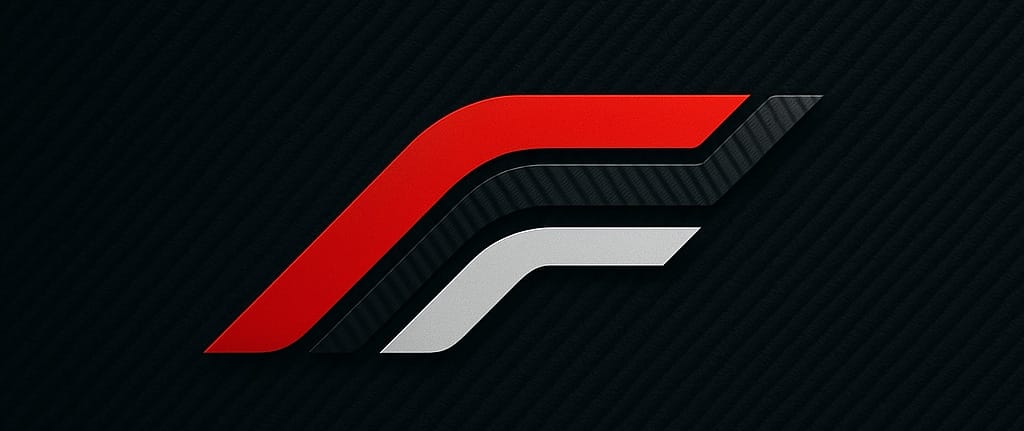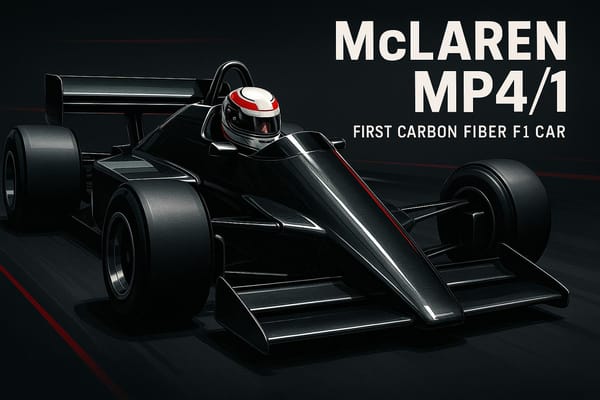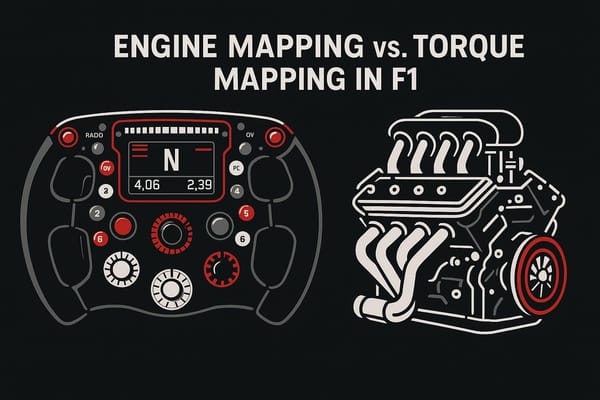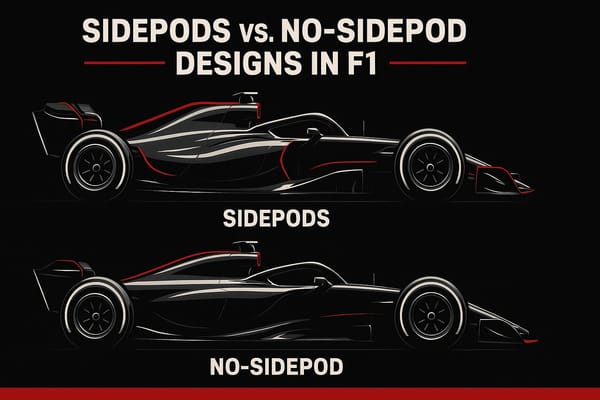Imola’s Resurrection: From Tragedy to Triumph at the Emilia Romagna Grand Prix Circuit
Explore Imola's journey from a tragic past to a modern racing icon, highlighting safety reforms and thrilling competition in Formula One.

Imola has transformed from a site of tragedy to a symbol of progress in Formula One. The circuit, known for its history, challenging layout, and pivotal role in motorsport safety, has evolved significantly since its debut in 1953. Here's what you need to know:
- Key Moments: Imola hosted its first Formula One race in 1980 and became the permanent home of the San Marino Grand Prix from 1981 to 2006.
- 1994 Tragedy: The deaths of Ayrton Senna and Roland Ratzenberger during the 1994 San Marino Grand Prix led to sweeping safety reforms in F1, including track reconfigurations and innovations like the HANS device.
- Modern Era: After a 14-year absence, Imola returned to the F1 calendar in 2020 as the Emilia Romagna Grand Prix, blending modern safety measures with its historic, demanding nature.
- Recent Updates: Safety improvements include reconfigured corners, gravel traps, and stricter track limits, ensuring a balance between thrilling racing and driver protection.
Imola remains a cornerstone of Formula One, showcasing the sport's commitment to learning from its past while maintaining its legacy as one of the most challenging and iconic circuits.
Imola – Tragedy, Triumph & Formula 1 History
Origins of the Imola Circuit
Back in 1948, Enzo Ferrari had a vision that would change the landscape of motor racing. He saw the potential in the local roads of Imola - an area blessed with a mix of natural terrain and easy accessibility. This vision laid the foundation for what would become a world-renowned racing circuit.
From Local Roads to Racing Circuit
Before it became a dedicated track, Imola's roads hosted informal street races organized by local enthusiasts. These grassroots events sparked the idea for something bigger. According to historical accounts:
"Four motor racing enthusiasts Alfredo Campagnoli, Graziano Golinelli, Ugo Montevecchi and Gualtiero Vighi proposed the construction of a new road linking existing public roads which could be turned into a racing circuit at which the local car companies could test their products."
Construction kicked off in March 1950, starting with a 2.5-mile (4 km) track that was 29.5 feet (9 m) wide. Over time, the circuit grew to 3.1 miles (5 km) and featured 16 bends with radii ranging from 118 to 20 feet (36 to 6 meters). On October 19, 1952, drivers Farina, Villoresi, and Ascari gave the track its first test run. Just a few months later, on April 25, 1953, the circuit officially opened with the 'Coni Grand Prize'. In 1970, it was renamed Autodromo Enzo e Dino Ferrari to honor Enzo Ferrari’s late son. These milestones set the stage for Imola's entry into the world of Formula One, which began with its historic 1980 race.
First Formula One Race: 1980
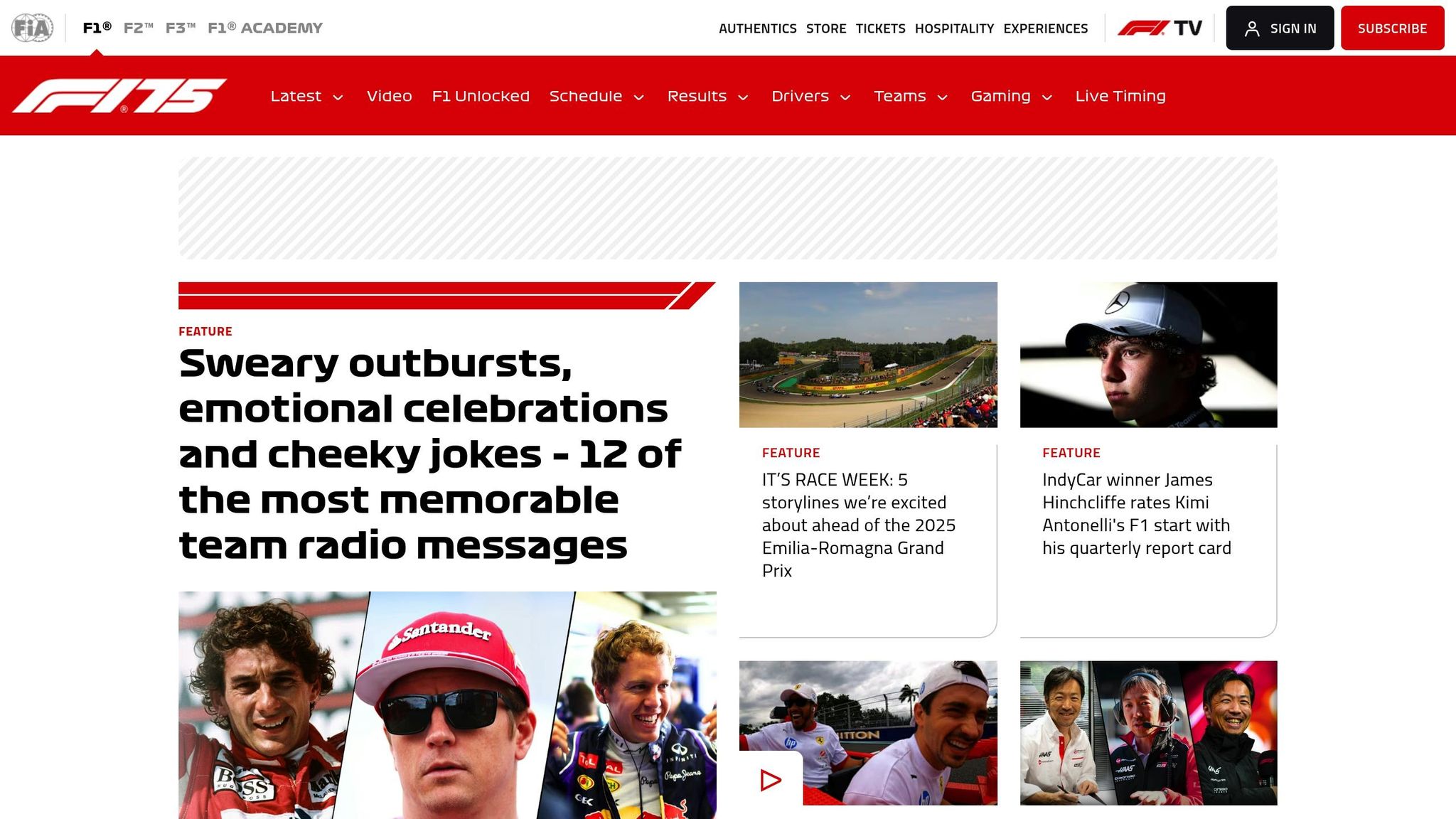
Imola's big moment arrived in 1980 when it stepped in to host the Italian Grand Prix while Monza underwent renovations. On September 14, 1980, Nelson Piquet claimed victory in a Brabham-Ford after 60 grueling laps, marking the first time Italy's premier race was held outside Monza. The event was a success, and from 1981 to 2006, Imola became a permanent fixture on the Formula One calendar as the host of the San Marino Grand Prix.
With its counter-clockwise layout, dramatic elevation changes, and challenging corners, the track quickly became a favorite among drivers and teams. Combined with its deep roots in racing history and its location in Italy's Motor Valley, Imola secured its place as a legendary venue in the world of Formula One.
1994 San Marino Grand Prix: The Critical Weekend
The events of this weekend forever changed the history of Imola and Formula One, becoming a turning point for safety in the sport. Held from April 29 to May 1, the 1994 San Marino Grand Prix was marred by devastating accidents that prompted immediate and sweeping safety reforms in Formula One.
Ratzenberger and Senna: Tragedy Strikes
The weekend began ominously during Friday practice when Rubens Barrichello suffered a terrifying crash, enduring a staggering 95 g-force impact. The following day, during Saturday qualifying, disaster struck again. Roland Ratzenberger's Simtek-Ford experienced a catastrophic front wing failure, sending the car into a barrier at 195 mph (314 km/h). The impact registered an unimaginable force of 500 g, claiming Ratzenberger's life.
Then, on race day, tragedy reached its peak. Ayrton Senna, one of the sport's greatest talents, crashed at the high-speed Tamburello corner. Traveling at 131 mph (211 km/h), the crash occurred just 1 minute and 9 seconds into the race, and Senna succumbed to his injuries shortly after.
Reflecting on the emotional toll of the weekend, Professor Sid Watkins, Formula One's medical delegate, shared a deeply personal moment:
"Ayrton broke down and cried on my shoulder."
Despite the heartbreak, Senna told Watkins:
"Sid, there are certain things over which we have no control. I cannot quit, I have to go on."
Safety Overhaul Following 1994
In the aftermath of these tragic events, the FIA launched an extensive safety program to address the vulnerabilities exposed that weekend. A thorough analysis identified 27 high-risk corners across circuits. New measures were swiftly introduced, including pit lane speed limits - set at 80 km/h during practice and 120 km/h for races - and upgrades to tire barriers and runoff areas.
Pat Symonds, Formula 1's chief technical officer, detailed the immediate technical changes made to cars:
"We shortened the diffuser, modified front wing endplates, opened holes in the airbox, and fitted the 'plank' to raise the entire car".
Additionally, the Grand Prix Drivers' Association (GPDA) was re-established, with Ayrton Senna, Gerhard Berger, and Michael Schumacher taking leadership roles. This gave drivers a stronger platform to advocate for safety improvements. These quick actions laid the groundwork for ongoing advancements in track safety and car design. Innovations like the HANS device (mandated in 2003) and stricter helmet standards are direct results of lessons learned from Imola.
The legacy of that weekend continues to influence Formula One, ensuring that the sport remains committed to prioritizing safety for drivers, teams, and fans alike. Imola's tragic past serves as a stark reminder of the importance of vigilance and progress in motorsport safety.
Track Updates and Safety Improvements
Safety Modifications: 1994-2000
In the aftermath of the tragic incidents in 1994, Imola underwent a sweeping transformation to prioritize safety. The infamous Tamburello corner - where Ayrton Senna's crash occurred at 192 mph - was reconfigured into a slower chicane, complemented by expanded gravel traps to reduce risks. A detailed evaluation of the circuit highlighted several hazardous zones, prompting critical safety upgrades:
- Reinforced tire barriers secured with conveyor belts
- Larger gravel traps at high-risk corners
- New chicanes strategically added to lower speeds in dangerous sections
These changes set the stage for further advancements in the years that followed.
2000-Present Infrastructure Updates
Over the years, Imola has continued to evolve, aligning with modern safety standards while preserving its challenging nature, including the 30-meter elevation changes across the 4.909-kilometer track. Recent upgrades have focused on enhancing safety without compromising the competitive spirit of the circuit.
As of May 2024, several significant updates were introduced:
- Turn 9: Reduced run-off areas and added double kerbs
- Turns 12-13: Smaller run-off zones to curb track limit violations
- Turns 14-15: New gravel traps and double kerbs installed at the exit
F1 Race Director Niels Wittich praised these updates, stating:
"The hope now is that it can be applied wherever necessary. Gravel is not expensive and it is an easy fix for most circuits."
Today, the circuit features 19 turns, with carefully placed double kerbs to enforce track limits naturally. These include left-side kerbs at Turns 2, 4, 5, 9, and 19, and right-side kerbs at Turns 3, 6, 11, and 12. Together, these improvements strike a balance between safety and the circuit's demanding nature, ensuring a secure yet thrilling experience for drivers and fans alike.
Current Status in Formula One
Emilia Romagna Grand Prix Results
Imola made its comeback to the Formula One calendar in 2020 after a 14-year break, and it has since become a highly anticipated event. The 2024 Emilia Romagna Grand Prix delivered thrilling competition, with Max Verstappen clinching victory by a razor-thin margin of just 0.725 seconds over Lando Norris.
| Position | Driver | Team | Gap | Points |
|---|---|---|---|---|
| 1 | Max Verstappen | Red Bull Racing | 1:25:25.252 | 25 |
| 2 | Lando Norris | McLaren | +0.725s | 18 |
| 3 | Charles Leclerc | Ferrari | +7.916s | 15 |
| 4 | Oscar Piastri | McLaren | +14.132s | 12 |
| 5 | Carlos Sainz | Ferrari | +22.325s | 10 |
The anticipation for the 2024 race was especially high, as the 2023 event had been canceled due to severe flooding. After his hard-fought victory, Verstappen summed up the race over team radio:
"Had to work hard for that"
The results highlight the intense strategic and technical challenges that drivers and teams face on this demanding circuit, where every decision matters.
Track Features and Racing Challenges
Imola's circuit is steeped in history, evolving from past tragedies to become a modern test of endurance and precision. Its anti-clockwise layout combines high-speed straights with intricate corners, demanding exceptional skill from drivers and meticulous preparation from teams.
Pit lane strategy plays a crucial role here, as each stop costs around 28 seconds, often pushing teams to opt for a single-stop approach. Mario Isola from Pirelli explained the reasoning:
"With the medium-hard strategy, one stop is quickest on paper. It's much quicker than a two-stop - we calculate roughly 15 seconds quicker"
Drivers often speak of the circuit’s intensity. Lewis Hamilton described the experience:
"It's just incredible the speeds we are going through some of these corners. They are like fighter planes around here"
Lando Norris echoed the sentiment, emphasizing the challenge:
"It's visually hard to register what is happening and to keep up. You turn in and hope for the best"
Imola’s old-school characteristics, such as gravel traps that penalize errors, add to the likelihood of safety car interventions, further complicating race strategies. Teams also see this Grand Prix as a key opportunity to test major car upgrades, thanks to its extended practice sessions and convenient European location.
Impact and Future Development
Safety Standards Influence
The events of Imola 1994 sparked a profound shift in motorsport safety that still resonates today. Following the San Marino Grand Prix, the FIA implemented sweeping reforms that redefined Formula One's approach to protecting drivers, teams, and spectators, setting benchmarks for racing worldwide.
Pat Symonds, Formula 1's Chief Technical Officer, highlighted the urgency of the initial response:
"The immediate work was not to improve the specific safety of the cars, but rather to slow the cars down. I think Max [Mosley – then FIA President, who really spearheaded the push for greater safety] felt the long-term research programmes needed doing – but also that we had to be seen to be doing something"
One of the most significant outcomes was the mandatory introduction of the HANS device in 2003, a safety innovation directly tied to the lessons learned from Imola's tragedy. This device continues to safeguard drivers across various motorsport disciplines.
Symonds also stressed the broader scope of these measures:
"We're not just trying to protect the drivers. Things like the wheel tethers, and preventing car launch are every bit as much – if not more – about protecting spectators. We never want to see a driver injured, but those involved in motorsport accept that what they do can be dangerous. There is a risk attached and that risk is evaluated and accepted, whether you're driving the car or standing in the pitlane. A spectator in the grandstands, shouldn't have to evaluate any risk."
This safety revolution laid the groundwork for ongoing advancements in both technical engineering and race-day precautions, ensuring the sport evolves without compromising safety.
Future Circuit Plans
With safety standards firmly in place, the focus now shifts to refining technical performance and strategy. Circuit management and teams are channeling their efforts into innovations designed to tackle Imola's unique challenges while maintaining its legacy as a demanding and iconic track.
Ferrari, for instance, is concentrating on enhancing downforce by refining floor designs and airflow management in their SF-25 model. Meanwhile, Mercedes is prioritizing upgrades aimed at better managing tire temperatures during races.
James Allison, Mercedes' Technical Director, shared insights into their development plans:
"There is some that will be more obvious to the outside world in the next handful of races and with a bit of luck they will improve our fortunes... Hopefully the ones that happen in the next two or three races will move the dial a bit for us. Also, we will continue to try to work on the tire temperature in the races, that will also improve our fortune"
Imola's technical demands continue to captivate drivers. Daniil Kvyat captured the thrill of racing on this legendary circuit:
"An F1 car through corners like Acque Minerali – the entrance is so fast, it's so cool. It really gives you a lot of adrenaline"
Through a blend of modern safety practices and cutting-edge technical upgrades, Imola remains a cornerstone of Formula One. Its evolution from a site of tragedy to a beacon of progress and innovation underscores the sport's dedication to improving both safety and performance while honoring its rich history.
Conclusion
Imola’s transformation from a site of heartbreak to a celebrated Formula One venue showcases the sport’s dedication to advancing safety while honoring its rich history. Since the 1994 San Marino Grand Prix, the circuit has become a benchmark for motorsport safety, all while keeping the thrilling essence that drivers and fans hold dear.
The safety innovations introduced at Imola, like the mandatory HANS device, set the stage for a new safety era in Formula One. These advancements have created a framework that safeguards drivers without compromising the competitive edge of the sport.
Today, Imola strikes a rare balance between safety and pure racing excitement. As Lewis Hamilton remarked during a recent race:
"It's just incredible the speeds we are going through some of these corners. They are like fighter planes around here."
This perfectly encapsulates the enduring allure of the track - where cutting-edge safety measures coexist with the raw adrenaline that has defined it since its debut in 1953.
The circuit’s return to the Formula One calendar in 2020 as the Emilia Romagna Grand Prix reaffirmed its place as a motorsport icon. Technical expert Ernest Knoors highlighted the importance of modern safety measures, stating:
"After a few severe crashes, it quickly became clear that the halo is a valuable addition to the sport, preventing injuries and saving lives. Now, it's hard to imagine the sport without it."
Imola stands as a testament to Formula One’s drive to evolve. It’s more than just a track on the calendar - it’s a symbol of the sport’s ability to learn from its past, innovate for the future, and honor the legacy of those who shaped its journey.
FAQs
How did the 1994 San Marino Grand Prix at Imola lead to major safety changes in Formula One?
The 1994 San Marino Grand Prix at Imola is remembered as one of the darkest weekends in Formula One history, with the tragic loss of Roland Ratzenberger and Ayrton Senna. This heartbreaking event acted as a wake-up call, prompting significant changes to improve safety in the sport.
In response, the FIA implemented both immediate and long-term measures to protect drivers and minimize risks. Circuits were redesigned with features like added chicanes and larger gravel traps to slow cars and improve runoff areas. Car designs were also adjusted to reduce speeds and downforce, making crashes less severe. Stricter safety protocols followed, including enhanced helmet standards, mandatory pit lane speed limits, and rigorous crash testing for vehicles.
Perhaps the most impactful change came in 2003 with the mandatory use of the HANS device. This life-saving equipment helps prevent severe head and neck injuries during high-impact crashes. Thanks to these reforms, Formula One has become much safer, with the lessons of Imola 1994 continuing to protect drivers on the track today.
What safety upgrades have been made to the Imola circuit since its return to Formula 1 in 2020?
Since its return to the Formula 1 calendar in 2020, the Imola circuit has seen important safety updates to align with current standards. These upgrades focus on improving driver safety and addressing track limits concerns.
Key changes include modifications to run-off areas at critical spots like the exit of Turn 9 and the section between Turns 12 and 13. At Turns 14 and 15, an asphalt section has been replaced with a gravel trap, designed to slow vehicles more effectively. Additionally, new double kerbs have been added at various turns to enhance both safety and track performance. These updates aim to keep Imola as a thrilling yet secure challenge for today's Formula 1 drivers.
What makes the Imola circuit such a challenging track in Formula One, and how do drivers prepare for it?
The Imola circuit is famous for its demanding nature, thanks to its high-speed sections, tight layout, and tricky corners that require a high level of precision and skill. With 19 challenging turns, gravel traps, and unforgiving braking zones, there’s little room for mistakes, making it a true test of a driver’s concentration and talent.
To tackle Imola’s distinct challenges, drivers focus on precision, honing smooth steering techniques and mastering the art of using curbs effectively to maintain speed through its intricate turns. Simulators and detailed track analysis are also essential tools, allowing drivers to refine their racing lines and braking points before they even set foot on the track.
Related posts
- Track by Track: The Complete Story of the 2025 Formula 1 Calendar
- Monaco Grand Prix Circuit Guide: The Prestige, Precision, and Pressure of F1’s Crown Jewel
- Why Monaco Still Matters: The 2025 Grand Prix at the World’s Most Iconic Circuit
- F1 Returns to Imola: What’s Changed for the 2025 Emilia Romagna Grand Prix?
